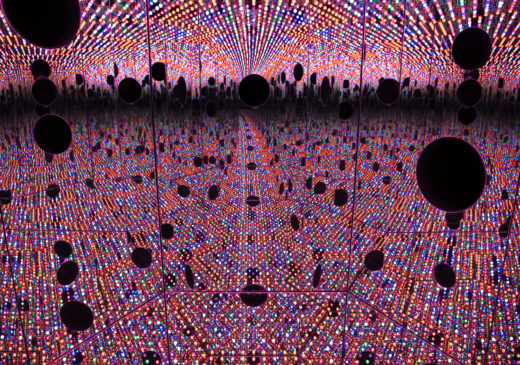
Yayoi Kusama (artista)
Acerca de
Yayoi Kusama nació en Matsumoto (Japón) en 1929. Tuvo poca formación formal y sólo estudió brevemente (1948-49) pintura tradicional japonesa en la Escuela de Arte Especializada de la ciudad de Kyōto. Llegó a Estados Unidos en 1957 y vivió en Nueva York durante dieciséis años, estableciéndose como artista de vanguardia y convirtiéndose en una figura importante de la performance, los happenings y los movimientos artísticos Pop Art y Minimalista, junto con sus compañeros y amigos, Andy Warhol, Frank Stella, Joseph Cornell y Donald Judd. En aquella época era especialmente conocida por sus pinturas de redes infinitas y sus "puntos", que siguen infiltrándose en sus lienzos, esculturas, grabados y prendas de vestir, e incluso se han extendido más allá de la performance y la instalación. Regresó a Japón en 1973, y en 1975 fue internada voluntariamente en un hospital psiquiátrico de Tokio, donde sigue viviendo hoy en día, realizando obras en el hospital y en varios espacios de estudio que mantiene en el barrio. Gran parte de la inspiración de sus obras proviene de un lugar bastante oscuro y difícil: sus problemas de salud mental, que comenzaron en su infancia y continúan hasta hoy. En sus palabras:
Mi arte se origina en alucinaciones que sólo yo puedo ver. Traduzco las alucinaciones y las imágenes obsesivas que me asolan en esculturas y pinturas. Todas mis obras en pastel son producto de la neurosis obsesiva y, por tanto, están inextricablemente relacionadas con mi enfermedad. Sin embargo, creo piezas incluso cuando no veo alucinaciones.
Una alucinación temprana se manifestó como un campo de puntos, y en lugar de quedar incapacitada por su enfermedad, recurrió a las artes como tratamiento creativo y solución. Su uso de los puntos y su repetición también se han convertido en una obsesión, con cientos de miles en algunas obras de arte a gran escala. Como ella misma ha dicho: "Nuestra tierra es sólo un punto de polca entre un millón de estrellas en el cosmos. Los lunares son un camino hacia el infinito".
De Wikipedia
contenido de la fuenteObras de arte de Yayoi Kusama

